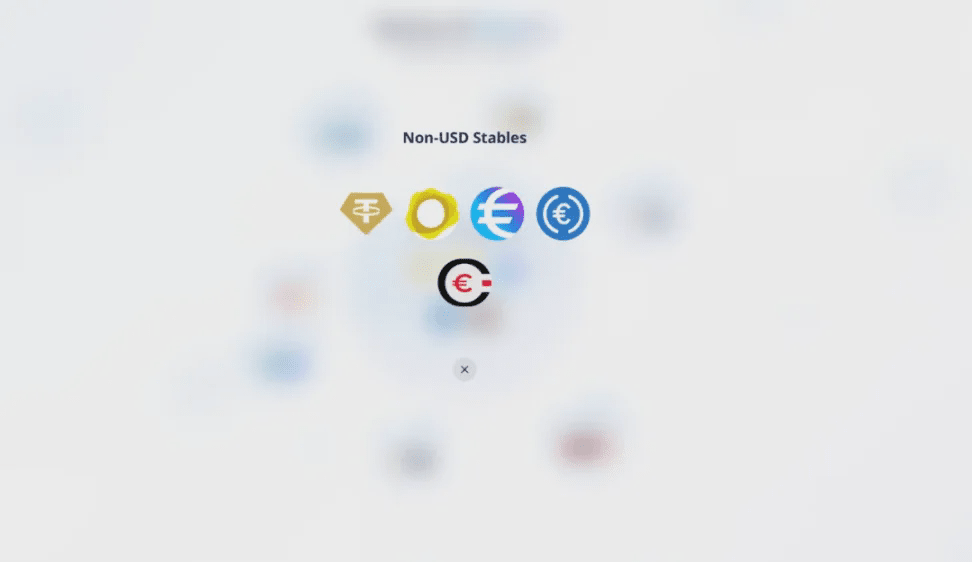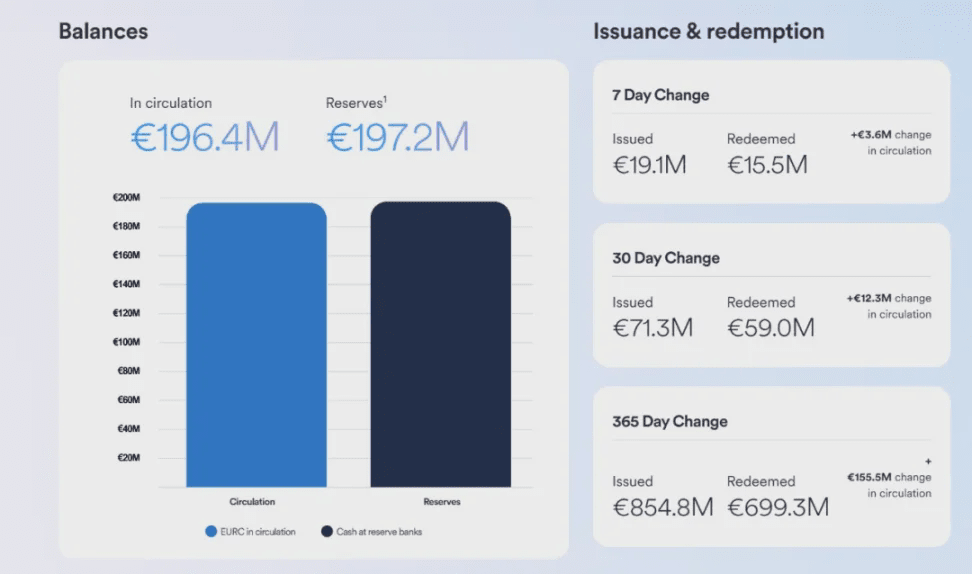If someone asks you, have you ever used a stablecoin?
You will most likely first think of USDT and USDC—these stablecoins linked to the dollar have almost become synonymous with 'stablecoin'.
But what if the other party is talking about euro stablecoins, gold stablecoins, or even the recently rumored RMB stablecoin? This actually reveals the true picture of the current stablecoin market: although the dollar is dominant, the world of stablecoins is far more diverse than imagined.
They do not attempt to challenge the dollar's position, but rather serve differentiated needs—some people hope to use euro stablecoins to avoid exchange rate fluctuations, some prefer gold stablecoins as safe-haven assets, and others look forward to the RMB stablecoin becoming a bridge for cross-border payments.
In other words, stablecoins are transitioning from a singular dollar narrative to a more complex global diversified narrative.
Why should we pay attention to non-dollar stablecoins?
If stablecoins are the 'blood' of the crypto world, then dollar stablecoins are the most core blood type in this system. Over the past five years, USDT and USDC have consistently held the top two positions in the market, almost monopolizing trading, clearing, and payment processes.
According to CoinGecko data, their combined market capitalization accounts for over 90% of the total stablecoin market size, even surpassing the actual share of the dollar in the global trade system, establishing an indisputable dominant position.
However, the demand for stablecoins goes far beyond just 'dollarization'.
In Europe, everyday payments, savings, and accounting systems are priced in euros, and users holding dollar stablecoins often need to bear additional exchange rate fluctuations. In the Middle East or Southeast Asian markets, while the dollar remains the dominant currency for international settlements, local residents also have a demand to anchor funds in local currencies or other safe-haven assets. Moreover, on a macro level, trends such as de-dollarization, regional currency unions, and the financialization of energy and resources further elevate the exploration volume of 'non-dollar anchored' stablecoins.
In other words, the reason we discuss non-dollar stablecoins today is not that there are problems with dollar stablecoins, but because the demands of the real world and crypto finance are diversifying. These differentiated needs form the market foundation for non-dollar stablecoins.
Based on imToken's market practice of 'stablecoins can no longer be summarized by a single narrative; their use varies by person and need', stablecoins are divided into multiple exploratory subsets.
According to imToken's classification method for stablecoins, non-dollar stablecoins currently have existing practices, primarily including euro stablecoins and gold stablecoins.
 Main types of non-dollar stablecoins.
Main types of non-dollar stablecoins.
Among the landscape of non-dollar stablecoins, the most practically significant representatives are euro stablecoins.
Currently, the more mainstream products on the market include Circle's EURC and Stasis's EURS, both pegged to the euro at a 1:1 ratio, supported by reserves from regulated financial institutions. The target audience for these stablecoins is not global crypto trading users, but rather local European users.
For example, if a German investor uses USDT as a trading medium, then every time they convert from fiat to the US dollar stablecoin, they have to bear the exchange rate risk of the euro against the dollar. However, if they use a euro stablecoin directly, they can complete transactions and settlements on-chain, completely avoiding exchange rate loss.
As regulatory frameworks like the EU's MiCA gradually come into play, the compliance and application scenarios of euro stablecoins become clearer. This means that in the future, euro stablecoins are expected to become the local mainstream currency mapping of European crypto finance. Although their market value is still far smaller than that of dollar stablecoins, their growth curve is clearly driven by policy dividends, indicating the possibility of long-term penetration.
 Unlike euro stablecoins, which are convenient for local settlements, another representative type of non-dollar stablecoin is gold stablecoins.
Unlike euro stablecoins, which are convenient for local settlements, another representative type of non-dollar stablecoin is gold stablecoins.
Gold has historically been the 'value anchor' of the global financial system. Even though the US dollar has been decoupled from the gold standard for over half a century, central banks around the world still regard gold as a core foreign exchange reserve. In the cryptocurrency space, this traditional safe-haven asset has also been tokenized and brought onto the blockchain, with typical representatives being PAX Gold (PAXG) and Tether Gold (XAU₮).
Their mechanisms are relatively straightforward; each token corresponds to one ounce of physical gold, held by custodians (such as vaults in London or Switzerland). Users can freely transfer these tokens between wallets like holding USDT, participate in lending or yield farming as collateral in DeFi protocols, or extract physical gold through a redemption mechanism. In this way, the traditional safe-haven attributes of gold can be combined with the high liquidity of blockchain.
Therefore, compared to physical gold bars or gold ETFs, the greatest innovation of gold stablecoins lies in 'divisibility and liquidity'. Traditional gold is often measured in grams or ounces, making small-scale division difficult. While gold ETFs are easy to trade, they rely on financial market clearing; gold stablecoins break through these limitations—representing real hard assets while allowing for rapid transfer and division on-chain, significantly lowering trading barriers.
Of course, it is not without flaws. The price of gold itself is subject to fluctuations from the global economy, interest rate environment, and geopolitical risks. Therefore, gold stablecoins do not possess the near-absolute price stability of dollar stablecoins. However, for those looking to seek diversified value storage on-chain, it offers a configuration option that is closer to hard assets.
Overall, euro stablecoins and gold stablecoins represent two distinctly different logics of non-dollar stablecoins: the former emphasizes local convenience and compliant development of regional currencies, while the latter emphasizes the digitization and liquidity enhancement of traditional safe-haven assets. Together, they drive the narrative of stablecoins from a singular 'dollar hegemony' to a diversified global currency ecosystem.
What is the future of non-dollar stablecoins?
From a macro perspective, the rise of non-dollar stablecoins will not weaken the dominance of dollar stablecoins in the short term. After all, whether for global settlements in crypto trading or liquidity support for cross-border clearing, the dollar's position is deeply rooted.
But this does not mean that non-dollar stablecoins are meaningless; they are more like a complement and extension to the existing structure, exploring new options for diversified currency anchoring outside the dollar-dominated financial order.
Taking euro stablecoins as an example, their value lies in reducing exchange rate friction for European users, and with the rollout of regulatory policies like MiCA, they are expected to become the cornerstone of regional digital finance. Meanwhile, gold stablecoins provide investors with a new tool that combines value storage and flexibility by integrating traditional safe-haven assets with blockchain liquidity.
In addition, news about the RMB stablecoin has recently emerged, gradually entering the crypto context. Although it has not yet formed large-scale circulation, it has dual driving forces of policy promotion and actual demand in cross-border settlements and regional trade settlements. Once combined with compliant on-chain financial infrastructure, the RMB stablecoin could become an important bargaining chip in the topic of 'de-dollarization'.
However, non-dollar stablecoins also face limitations.
Firstly, there is insufficient liquidity. Compared to the hundreds of billions in scale of USDT and USDC, the market value of non-dollar stablecoins is generally limited, leading to insufficient depth and acceptance in the secondary market.
Secondly, the application scenarios are singular; euro stablecoins are more limited to Europe, gold stablecoins tend to focus on value storage, and RMB stablecoins are constrained by policy windows and compliance environments, making it difficult for them to become a universally accepted currency like dollar stablecoins.
However, from a long-term perspective, the story of stablecoins is gradually moving towards 'multipolarization'. Dollar stablecoins will still be the backbone of crypto finance, while euro, RMB, gold, and other anchor assets will fulfill market demands in their respective dimensions.
They may not be able to replace the dollar, but they are continually broadening the boundaries of stablecoins, reshaping the structure and layers of the entire ecosystem—the future of stablecoins may not be the victory of a single currency, but rather a coexistence and mutual supplementation of various anchor assets.
Dollar stablecoins are the starting point, but they are by no means the endpoint.

